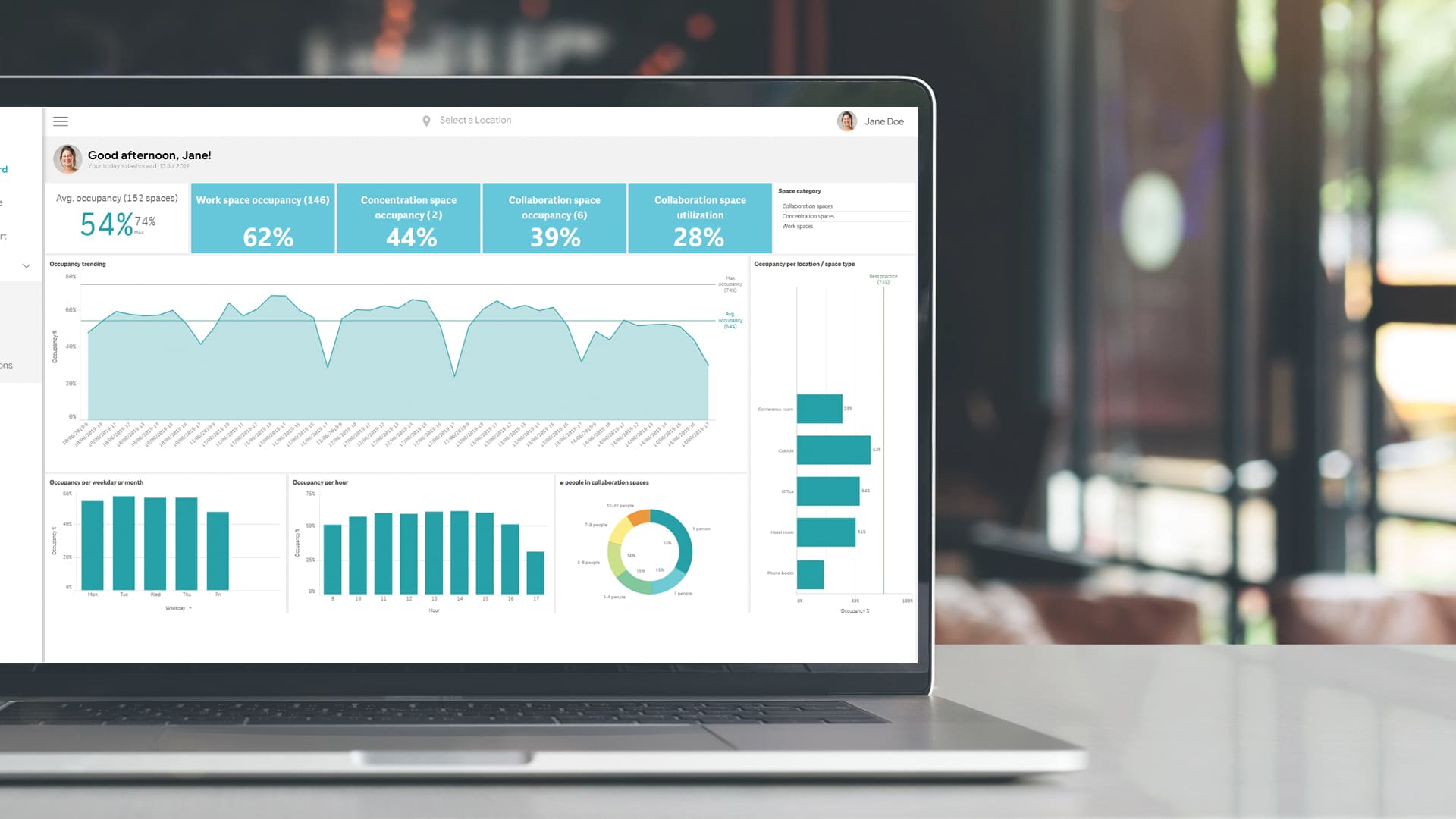Workplace management is a field that has gained importance in recent years. The facilities and workplace management industries have evolved rapidly over the past two decades, with companies becoming more and more aware of the importance of real estate in managing their balance sheet and the value of a good working environment to their employees’ productivity.
For facility and workplace management professionals, the benefits of deploying an IWMS solution are significant in terms of improving the quality and profitability of the services they provide. An integrated approach to workplace management allows them to stay abreast of the latest developments in the workplace and to address the constraints they face while reducing costs.
Workplace management: a definition and the key challenges
Workplace management
Workplace management is a global concept that encompasses the management of services, equipment, processes, and technologies enabling employees to work, collaborate, learn and innovate.
The objective of this employee-centric type of management is to put the work environment at the service of employees to improve their well-being and user experience.
Setting up and maintaining a good work environment allows companies to increase the efficiency and productivity of their employees. A good management practice helps to achieve these objectives by adapting to evolving needs while optimizing costs.
Performance and workplace
Workplace management is a concept that goes beyond the traditional functions of facility management by improving employee performance and collaboration. More than a simple support service, it is a strategic tool that can help companies achieve their objectives. It represents a tangible added value.
Workplace management is a process of continuous improvement focused on achieving the highest level of performance in corporate workplaces. The most productive companies today have in common that they acknowledge the role of workplace management in the engagement and productivity of their employees.
Workplace management can be applied at many different scales, from the management of a few workstations to the management of a large, internationally distributed real estate portfolio. In all cases, it encompasses all processes that improve the performance level of workspaces, from strategic planning to operational use of equipment, including security, maintenance, and catering.
Method for rationalizing the workplace
Beyond a mere increase in employee productivity, good workplace management also makes it possible to rationalize the organization of space and equipment, and ultimately to reduce costs.
However, this rationalization is far from obvious: it has already been shown that the average occupancy rate of workplaces is generally between 50% and 60%. In particular, certain costly equipment such as meeting rooms, vehicles, or specific materials often have a low occupancy rate compared to their operating costs.
Optimizing this occupancy rate generally requires the introduction of new concepts around the workplace. The most innovative companies are looking to implement a type of work environment focusing on the activity of their employees to promote collaboration and productivity. Employees themselves can choose when, how, and with whom they work, to adapt the way they work to their activities and needs.
IWMS: a response to the increasing importance of workplace management
Workplace management professionals are currently faced with a greater need for cost reduction, transparency, and flexibility in their business. What are the real costs and where can potential savings be found? How to adapt properties and services to the changing requirements of the company? How to maintain a high level of service quality cost-effectively? What is the best outsourcing strategy?
These are some of the questions workplace managers must answer today while complying with legislation, the demands of sustainable development, and technological innovations.
In this context, workplace professionals have a heightened need for reliable information at all levels: strategic, tactical, and operational. Operational data on buildings and workplaces and their usage are becoming more and more essential to optimize their management while providing their occupants with a good working environment.
IWMS and the 3 levels of workplace optimization
IWMS solutions can help companies create a good work environment for their employees while optimizing costs on three different levels.
Strategic level
IWMS allows for the medium- and long-term alignment of company strategies and the workplace. Many parameters influence this environment: growth, new markets, changes in the workforce, company mergers, etc.
By using an integrated workplace management solution, all these evolutions can be taken into account to make the most appropriate strategic decisions. It also allows anticipating future needs by elaborating different scenarios according to the possible evolutions and the company’s objectives.
Tactical level
The objective of workplace management, at the tactical level, is to implement the strategy defined by the company and to ensure the continuous monitoring and control of performance so as to improve it if necessary.
As part of the IWMS, this process integrates all the projects and activities that allow for the optimization of workspaces, including the management and coordination of all changes linked to the company’s evolution.
This allows for tactical management of the work environment, with a wide variety of solutions and analytics to plan and manage change according to utilization rates and costs. For example, the use of a computer-aided design (CAD) system allows for visualization of current and future workplace usage.
Operational level
However, the strategic and tactical aspects should not overshadow the primary requirement for successful workplace management: operational excellence and flexibility. In fact, a workplace where employees have difficulty finding a workstation or a meeting room when they need it, cannot be considered as well managed. The primary added value of workplace management is therefore to facilitate their work by offering them smart solutions to locate, reserve, and make use of the spaces and equipment they need.
The use of an IWMS solution allows for both the reservation of meeting rooms and workspaces and their use without reservation if available. This requires the implementation of occupancy sensors and a tool for analyzing space usage rates. For facility managers, these technologies are also a major help in limiting vacancy rates and optimizing the services offered in line with the actual occupancy rate of a building.

IWMS: an essential tool for effective workplace management
There is no doubt that effective workplace management must consider many parameters. This is why adopting an Integrated Workplace Management Solution (IWMS) is now essential for professionals who aim to provide occupants with a good working environment while keeping costs under control.






